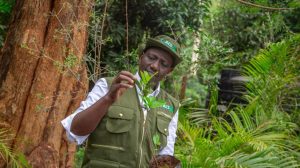
Residents of the Gazi and Makongeni areas in the South Coast of Kenya have earned millions from selling carbon credits for over 10 years.
The locals invented the word Hewa Kaa to describe carbon credits that helped them build schools, and hospitals, create employment, and generate clean water.
According to Plan Vivo, an organization that helps communities plant trees and generate carbon credits, the project is expected to create close to Ksh18 million in annual revenue by selling at least 3,000 metric tons of CO2 equivalent per year.
Gazi and Makongeni residents started enjoying the proceeds of carbon credits following the establishment of Mikoko Pamoja (Mangroves together), a development initiative on the South Coast of Kenya. Mikoko Pamoja conserves 117 hectares of mangrove trees.

According to the United Nations, the Mikoko Pamoja initiative aims to protect 107 hectares of natural mangrove forest and conserve 10 hectares of red mangrove plantations established in the early 1990s.
How Mangrove Forests help them sell carbon credits
Mangroves retain carbon in their biomass and lock it into the marine mud. According to data from Equator Initiative, more than 1,500 metric tons of carbon per hectare are stored beneath the mangrove forests, which is more than eight times that of terrestrial forests.
As a result of the Gazi and Makongeni residents’ efforts, Mikoko Pamoja became the first-ever blue carbon initiative in the world that sold carbon credits from mangrove conservation activities.
Plans to Increase Carbon Credits Monetisation
Carbon credits are most often created through agricultural or forestry practices. Individuals or companies looking to offset their own greenhouse gas emissions can buy those credits through a middleman or those directly capturing the carbon. In the case of a farmer who plants trees, the landowner gets money; the corporation pays to offset their emissions; and the middleman, if there is one, can earn a profit along the way.
In November 2022, the Africa Carbon Markets Initiative (ACMI) was inaugurated to support the growth of carbon credit production and create jobs in Africa.
During the launch, the initiative announced bold plans to reach 300 million credits produced annually by 2030.
On September 3, 2023, President William Ruto for the establishment of a carbon market aligned with global pricing standards.
“We are not going to take peanuts. Our carbon assets must account for our assets and must be valued correctly,” he stated.
He observed that Africa is neither poor nor desperate but a wealthy continent that needs to properly profile and value its fortunes.
“Africa has huge renewable resources that is not yet captured in its asset books.”
